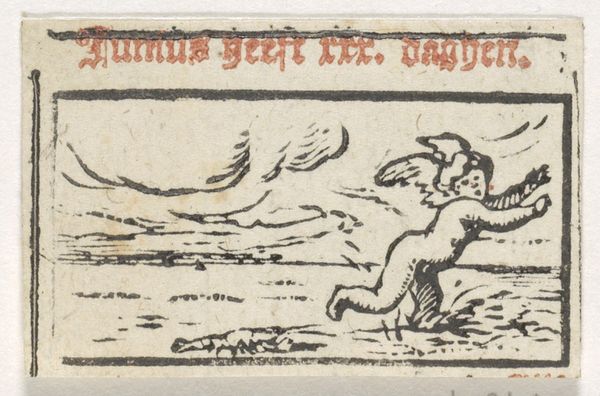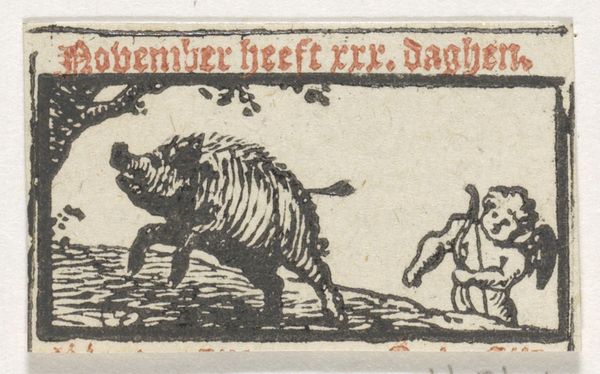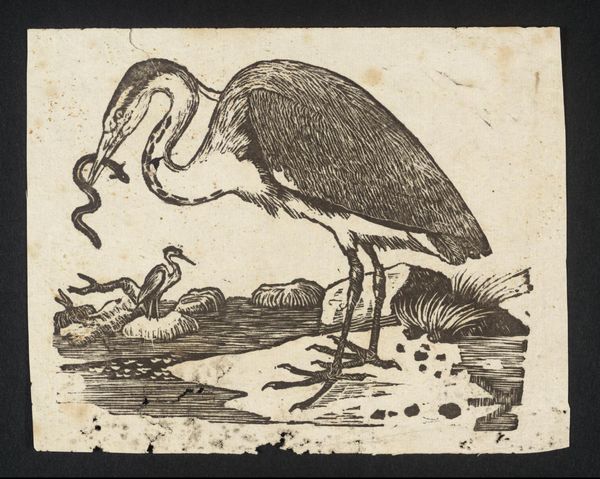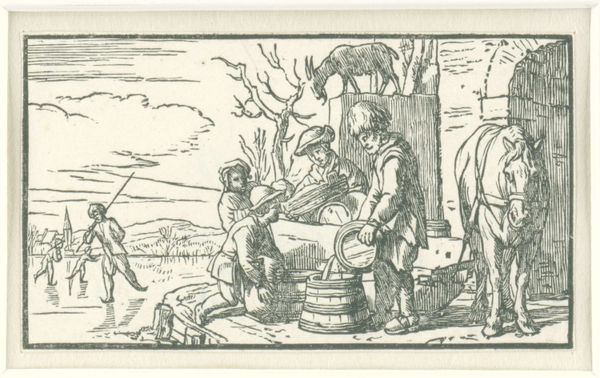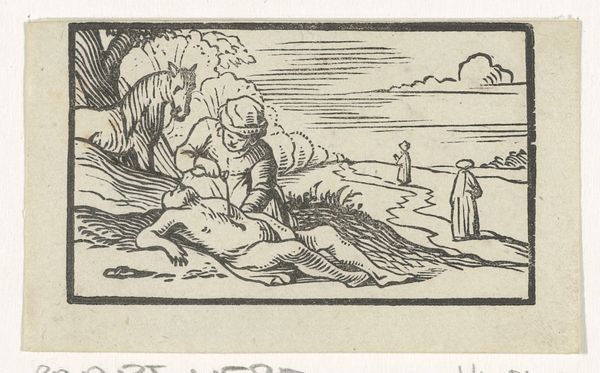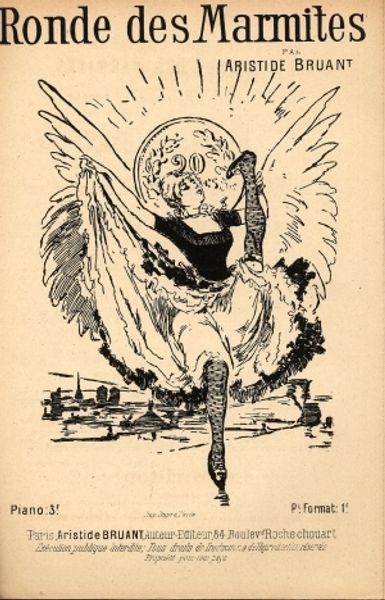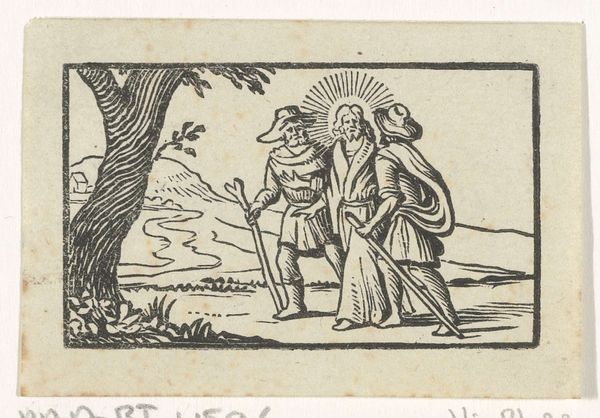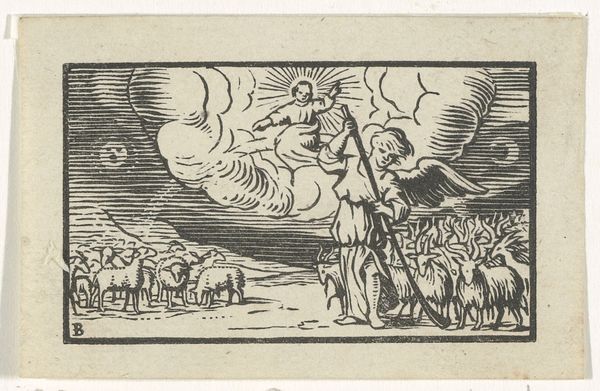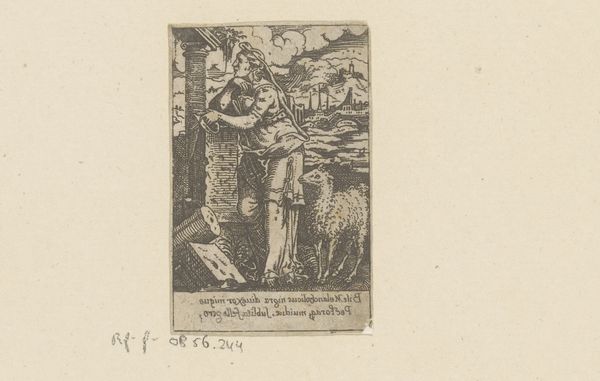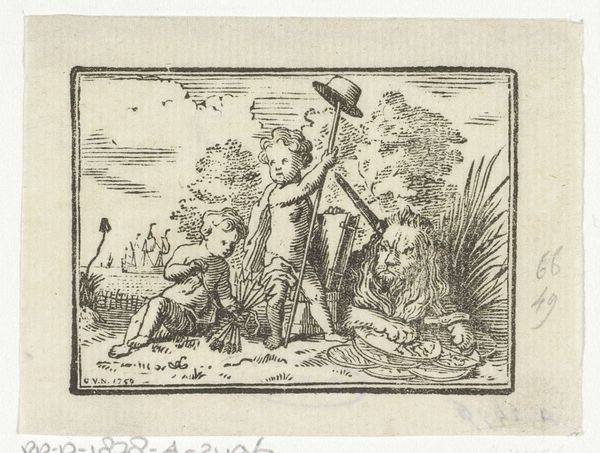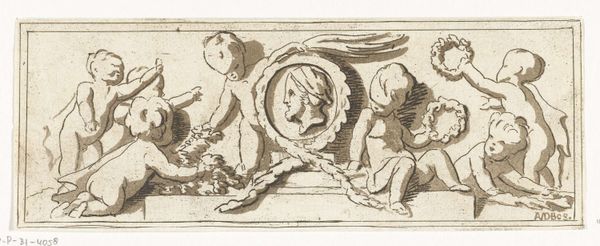
drawing, print, ink, engraving
#
drawing
#
medieval
#
narrative-art
# print
#
figuration
#
ink
#
engraving
#
miniature
Dimensions: height 24 mm, width 38 mm
Copyright: Rijks Museum: Open Domain
Editor: This miniature print, "Oktober" by Dirck de Bray, created sometime between 1635 and 1694, seems incredibly detailed considering its small size and the ink engraving. It’s an angel tending to foliage of some kind. What stands out to you about it? Curator: As a materialist, I'm drawn to the printmaking process itself. Consider the labor involved in producing such a miniature work. Engraving requires intense focus, and the very act of reproduction suggests a democratization of imagery. Who was producing these images, and for whom were they intended? Editor: That's a good point. I hadn’t considered the “who” and the “why” behind it. So, this wasn't necessarily about artistic expression in the traditional sense? Curator: Precisely. It invites us to examine the relationship between craft, industry, and consumption in the 17th century. Was this a form of folk art? Part of a larger commercial enterprise? The use of ink also prompts reflection on the accessibility and durability of printed materials versus unique artworks, for example paintings. How did that availability affect artistic styles? Editor: I see. It moves art from being about some sort of divine talent, to being something that's manufacturable and can exist as something that's consumed and owned. Is that what you mean? Curator: Yes, and understanding these questions can give us clues about period’s societal structures and economics. Considering it's part of a series depicting months, the print blurs the line between art, craft, and even utilitarian objects like calendars. Editor: That changes how I see it. I was looking at the image itself, the angel, but now it’s more about the conditions that made it possible. Curator: Exactly. It becomes less about de Bray's genius and more about the systems that enabled his practice, and the image's circulation. We could do some digging on him as an artist, to try and see what his context was for creation, which may reveal even more to your point. Editor: This has been such an interesting look into how everyday materials reflect and shape a particular era. Thanks for the different perspective.
Comments
No comments
Be the first to comment and join the conversation on the ultimate creative platform.


